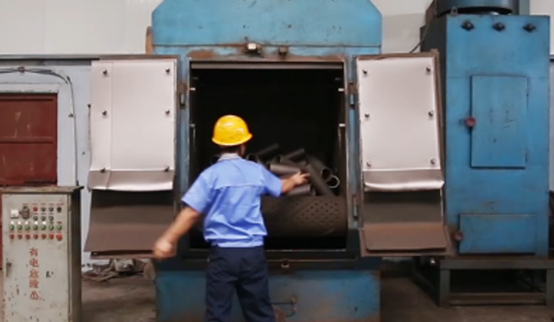 Afrikaans
Afrikaans  Albanian
Albanian  Amharic
Amharic  Arabic
Arabic  Armenian
Armenian  Azerbaijani
Azerbaijani  Basque
Basque  Belarusian
Belarusian  Bengali
Bengali  Bosnian
Bosnian  Bulgarian
Bulgarian  Catalan
Catalan  Cebuano
Cebuano  Corsican
Corsican  Croatian
Croatian  Czech
Czech  Danish
Danish  Dutch
Dutch  English
English  Esperanto
Esperanto  Estonian
Estonian  Finnish
Finnish  French
French  Frisian
Frisian  Galician
Galician  Georgian
Georgian  German
German  Greek
Greek  Gujarati
Gujarati  Haitian Creole
Haitian Creole  hausa
hausa  hawaiian
hawaiian  Hebrew
Hebrew  Hindi
Hindi  Miao
Miao  Hungarian
Hungarian  Icelandic
Icelandic  igbo
igbo  Indonesian
Indonesian  irish
irish  Italian
Italian  Japanese
Japanese  Javanese
Javanese  Kannada
Kannada  kazakh
kazakh  Khmer
Khmer  Rwandese
Rwandese  Korean
Korean  Kurdish
Kurdish  Kyrgyz
Kyrgyz  Lao
Lao  Latin
Latin  Latvian
Latvian  Lithuanian
Lithuanian  Luxembourgish
Luxembourgish  Macedonian
Macedonian  Malgashi
Malgashi  Malay
Malay  Malayalam
Malayalam  Maltese
Maltese  Maori
Maori  Marathi
Marathi  Mongolian
Mongolian  Myanmar
Myanmar  Nepali
Nepali  Norwegian
Norwegian  Norwegian
Norwegian  Occitan
Occitan  Pashto
Pashto  Persian
Persian  Polish
Polish  Portuguese
Portuguese  Punjabi
Punjabi  Romanian
Romanian  Russian
Russian  Samoan
Samoan  Scottish Gaelic
Scottish Gaelic  Serbian
Serbian  Sesotho
Sesotho  Shona
Shona  Sindhi
Sindhi  Sinhala
Sinhala  Slovak
Slovak  Slovenian
Slovenian  Somali
Somali  Spanish
Spanish  Sundanese
Sundanese  Swahili
Swahili  Swedish
Swedish  Tagalog
Tagalog  Tajik
Tajik  Tamil
Tamil  Tatar
Tatar  Telugu
Telugu  Thai
Thai  Turkish
Turkish  Turkmen
Turkmen  Ukrainian
Ukrainian  Urdu
Urdu  Uighur
Uighur  Uzbek
Uzbek  Vietnamese
Vietnamese  Welsh
Welsh  Bantu
Bantu  Yiddish
Yiddish  Yoruba
Yoruba  Zulu
Zulu Understanding the Benefits and Applications of Tapered Roller Bearings in Machinery
Understanding Tapered Roller Bearings Design, Functionality, and Applications
Tapered roller bearings are a crucial component in the world of machinery and automotive engineering. These bearings are designed to handle both radial and axial loads, making them a versatile choice for various applications. The unique design features of tapered roller bearings offer several advantages over other bearing types, leading to their widespread use in diverse industries.
Design and Structure
Tapered roller bearings consist of an inner ring (cone), an outer ring (cup), tapered rollers, and a cage. The tapered rollers are positioned between the cones and the cup, allowing for efficient load distribution. The cones have a conical shape that allows them to align with the rollers, ensuring even contact and reducing friction during operation. This design also permits axial movement, making tapered roller bearings ideal for applications where both axial and radial loads are present.
The angle of taper is a critical design attribute, as it determines the bearing's load capacity and performance characteristics. A steeper angle increases the bearing's ability to handle axial loads, whereas a shallower angle can accommodate higher radial loads. The materials used in manufacturing tapered roller bearings are also significant; typically, high-grade steel or ceramic materials are chosen for their strength, durability, and resistance to wear.
Functionality
The primary function of tapered roller bearings is to support rotating parts and reduce friction between them. As the shaft rotates, the rollers roll along the inner surface of the cone, which minimizes contact area and decreases friction. This rolling motion allows for smoother operation and extends the lifespan of both the bearing and the components it supports.
One of the most notable features of tapered roller bearings is their ability to handle combined loads. They are especially effective in scenarios where there are varying loads over time, such as in automobile wheel hubs. The capabilities of tapered roller bearings to accommodate both radial and axial forces make them preferable in applications that require reliable and efficient performance.
Applications
tapered roller

Tapered roller bearings are used in a wide range of applications across different industries. In the automotive sector, they are commonly found in wheel hubs, transmissions, and differential gears. The efficient load management capabilities of tapered roller bearings contribute significantly to the overall performance and durability of vehicles.
In industrial machinery, tapered roller bearings are widely employed in conveyor systems, gearboxes, and electric motors. Their ability to function effectively under high loads and variable speeds makes them suitable for heavy-duty applications. Additionally, tapered roller bearings are often used in the aerospace industry, where reliability and performance are paramount.
Another significant application of tapered roller bearings is in construction machinery, such as excavators and bulldozers. These machines require robust components that can withstand harsh conditions and heavy loads, making tapered roller bearings an ideal choice.
Advantages
The advantages of tapered roller bearings are numerous. They offer high load capacity due to their design, allowing for better performance in heavy-duty applications. Their versatility in handling both radial and axial loads means that fewer types of bearings are required in machinery, simplifying inventory and maintenance.
Furthermore, tapered roller bearings exhibit lower friction compared to other bearing types, which can lead to improved energy efficiency and reduced heat generation during operation. Their durability, particularly when constructed from high-quality materials, ensures long service life and reduced maintenance costs, making them a cost-effective solution for various engineering challenges.
Conclusion
Tapered roller bearings are an integral part of modern engineering and manufacturing systems. Their unique design allows them to support complex load requirements, leading to their widespread adoption in automotive, industrial, and aerospace applications. As technology continues to advance, the role of tapered roller bearings will remain crucial, offering reliability and performance that meet the demands of increasingly sophisticated machinery. Understanding their design, functionality, and applications can help engineers and manufacturers make informed decisions about their incorporation into new and existing projects.
-
Revolutionizing Conveyor Reliability with Advanced Rubber Lagging PulleysNewsJul.22,2025
-
Powering Precision and Durability with Expert Manufacturers of Conveyor ComponentsNewsJul.22,2025
-
Optimizing Conveyor Systems with Advanced Conveyor AccessoriesNewsJul.22,2025
-
Maximize Conveyor Efficiency with Quality Conveyor Idler PulleysNewsJul.22,2025
-
Future-Proof Your Conveyor System with High-Performance Polyurethane RollerNewsJul.22,2025
-
Driving Efficiency Forward with Quality Idlers and RollersNewsJul.22,2025





























